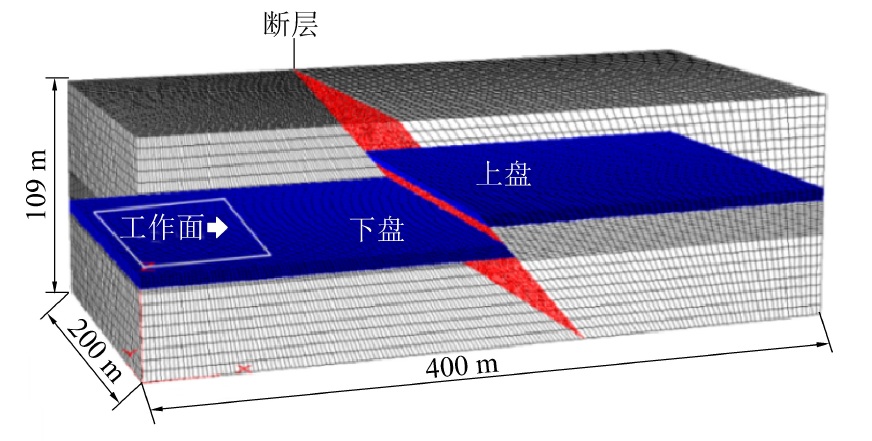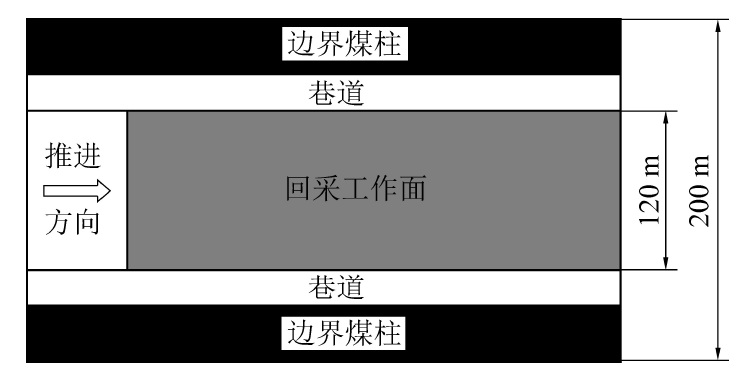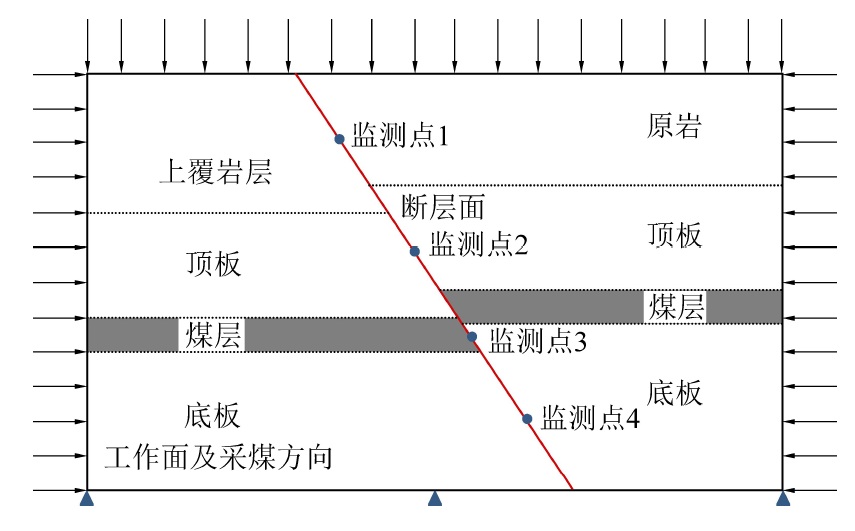摘要:
为了分析开采扰动与逆断层耦合作用下工作面应力状态变化情况,通过数值模拟手段,引入滑移倾向性指标Ts对下盘工作面回采过程中逆断层的复杂活化过程进行了综合定量分析,得到了开采扰动下逆断层对工作面应力状态的影响。分析结果表明:逆断层受开采扰动的影响会发生阶段性的转变,且可以划分为3个阶段:准静态阶段、活化阶段、滑移错动阶段。准静态阶段,逆断层面Ts处于活化危险基准面之下,逆断层面整体位移矢量沿着断层向上;活化阶段,逆断层小部分区域Ts位于活化危险基准面之上,逆断层面位移矢量由原来的向上开始向下逐渐转变;滑移错动阶段,逆断层面绝大部分区域位于活化危险基准面之上,逆断层发生大范围的向下滑动。断层在阶段性转变过程中对工作面支承压力影响不明显,但是,逆断层面倾角变化对工作面支承压力有着明显的影响,且断层倾角越小,工作面超前支承压力集中系数越大,越容易诱发冲击地压的发生。
Abstract:
In order to analyze the change of the stress state of the working face under the coupling effect of mining disturbance and reverse fault, by means of numerical simulation, the slip tendency index Ts was introduced to comprehensively and quantitatively analyze the complex activation process of reverse faults in the mining process of footwall working face, and the influence of reverse faults on the stress state of working face under mining disturbance was obtained. The analysis results show that the reverse fault will undergo phase changes under the influence of mining disturbance, and it can be divided into three phases: quasi-static phase, activation phase, and slip dislocation phase. In the quasi-static phase,Ts value of the reverse fault is below the activation hazard base level, and the overall displacement vector of the reverse fault is upward along the fault. In the activation phase, Ts value of a small part of the reverse faultis up the activation hazard base level, and the slip direction of the partial fault area change from up to down along the fault. In the slip phase, most of the reverse fault plane is located above the activation danger base level, and the reverse fault slides downward in a large range. The influence of the fault on the bearing pressure of the working face is not obvious during the phase transition. But the change of the fault dip angle has a significant effect on the abutment pressure of the working face. The smaller the fault dip angle, the greater the concentration coefficient of the leading bearing pressure in the working face, and the easier it is to induce the occurrence of coal bumps.
 百度学术
百度学术
 百度学术
百度学术
 百度学术
百度学术
 百度学术
百度学术
 百度学术
百度学术
 百度学术
百度学术




 下载:
下载:








